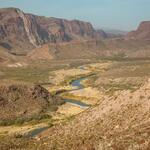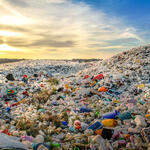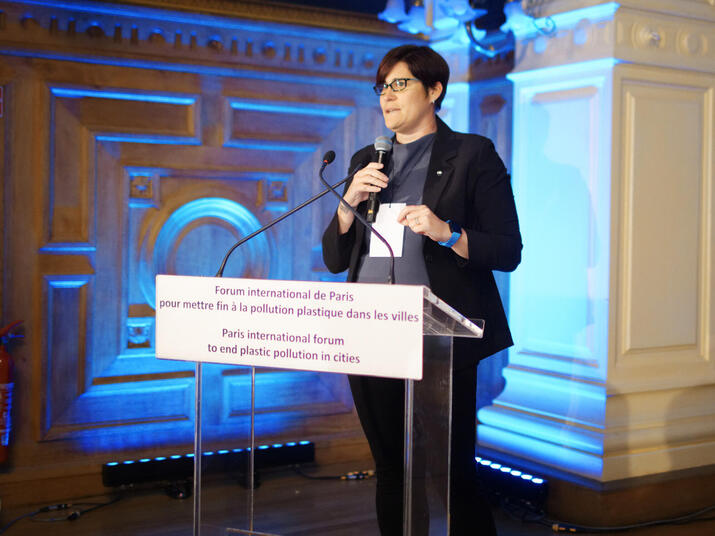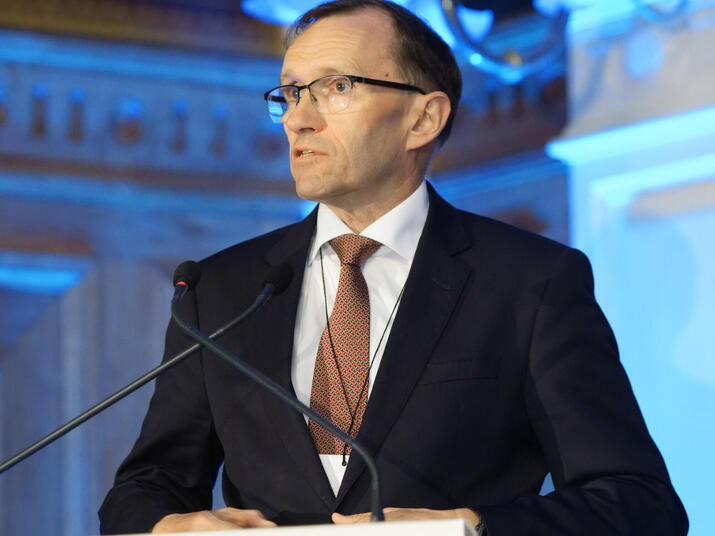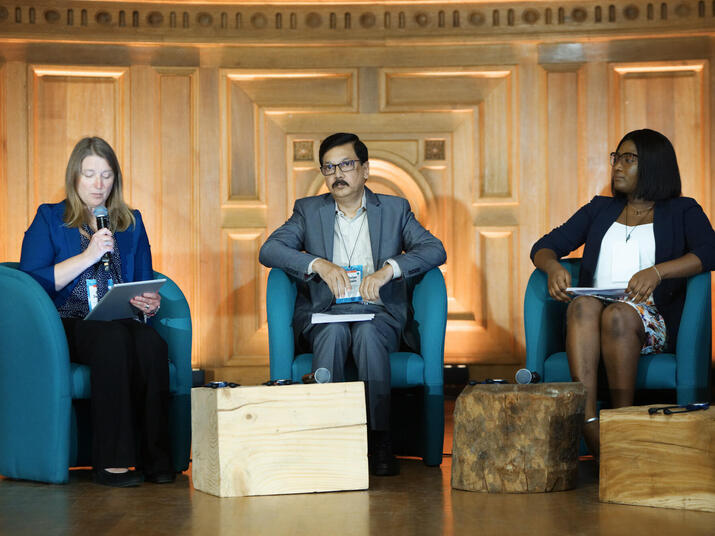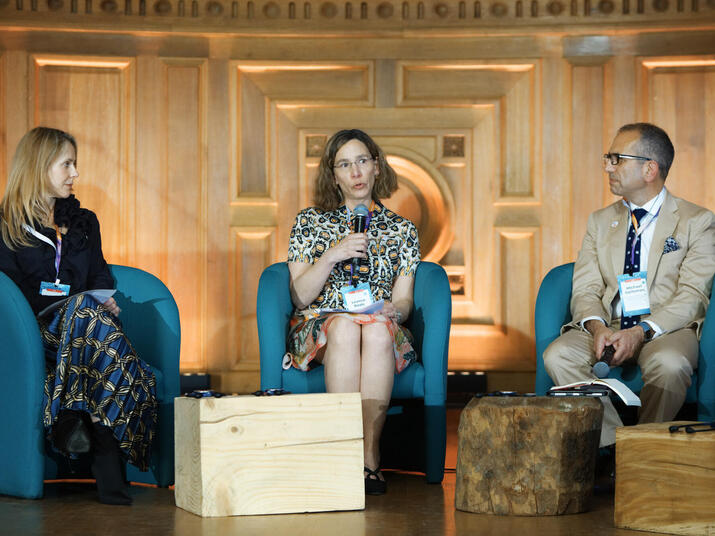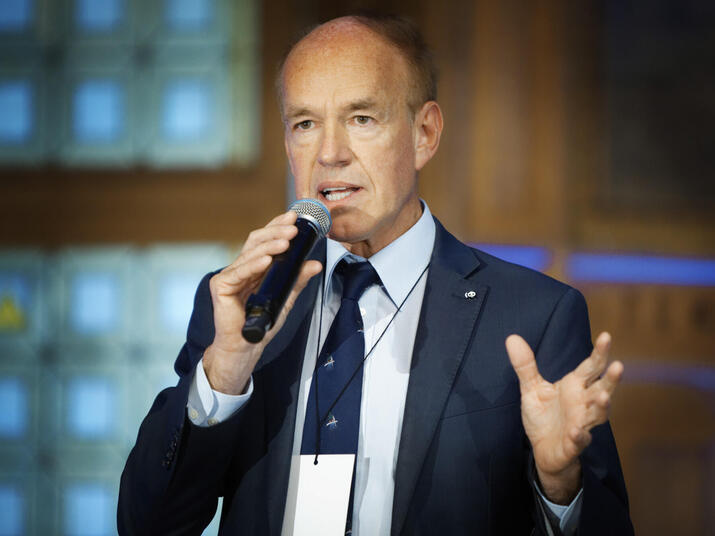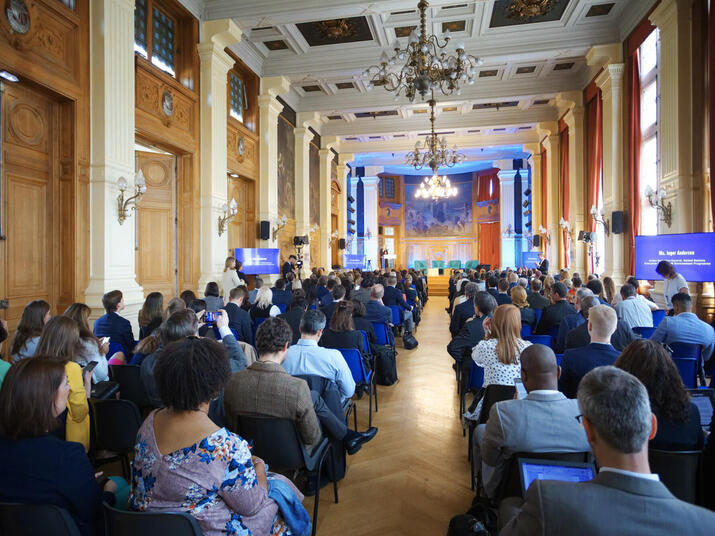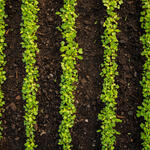- Date: 06 July 2023
- Author: Clay Bolt
Grasslands have a PR problem.
As a publicist and promoter of grasslands, it is my job to convince you—the reader—that these ancient, expansive ecosystems are important. I hope to compel you to regard not only the Northern Great Plains, where I live and work, as irreplaceable, but grasslands-at-large. I want you to understand that these ecosystems are more than just an empty stage suited only for growing crops, development, or resource extraction. WWF understands this, which is why in 2021 we launched a partnership with Air Wick® in 2021 called “One Square Foot” with the goal of reseeding 1 billion square feet of previously plowed grasslands and wildflower habitats across the Northern Great Plains.
- Date: 29 June 2023
- Author: Tara McNerney, Pacific Coast Food Waste Commitment Manager, WWF
The Pacific Coast Food Waste Commitment (PCFWC) recently released a report detailing the initiative’s progress in 2022, demonstrating remarkable strides towards its goal of halving food waste by 2030. Particularly noteworthy is the PCFWC's groundbreaking dataset—developed using measurement and reporting tools provided by ReFED—that allows year-over-year comparison of food waste at the retail level. This dataset constitutes an unprecedented resource in food waste research that will provide much-needed guidance for the retail industry as well as other sectors.
- Date: 21 June 2023
- Author: Brian Richter, senior freshwater fellow at World Wildlife Fund
The iconic Rio Grande, or “Great River,” is at risk of losing its greatness. Water overuse and climate change have heavily depleted the once-mighty flow of the river, creating desperate conditions for the farming communities and natural ecosystems that depend on it. We can restore the Rio Grande to some semblance of its former glory, but doing so will require a transformational shift in the way political leaders, farmers and communities perceive the river, their culture, and their livelihoods.
Just how far has the mighty river fallen? Consider this: whereas the river once rose forcefully in springtime in response to melting snows in Colorado, its ‘spring pulse’ has now dwindled to less than a third of its former volume. As a result, water storage reservoirs essential to farming have dried up, leaving farmers without water to grow food and fiber. At the end of last year’s growing season, New Mexico’s largest reservoir, Elephant Butte Reservoir, was less than 10% full.
- Date: 16 June 2023
- Author: Amelia Meyer, Senior Program Officer, Nature Metrics, WWF
This past winter, 196 countries signed the Kunming-Montreal Global Biodiversity Framework to take urgent action to halt and reverse biodiversity loss by 2030 and to protect 30% of land and sea area by 2030. All actors will need to do their part to realize these global targets. A new “Nature” paper by Rockström et al. provides scientific evidence that “Seven of eight globally quantified safe and just (Earth system boundaries) and at least two regional safe and just (Earth system boundaries) in over half of global land area are already exceeded.”
The private sector has a critical role in contributing to a safe and just future that is nature positive. To do so, companies must recognize their location-specific, material impacts on nature and how they depend on it. Understanding the environmental impacts and considering trade-offs at the local and global levels are critical to achieving any sort of nature-related goal. This is a daunting task when you consider the tangled web of global supply chains. But for the sake of your business and all life on this planet, it’s worth doing. And there is help.
- Date: 16 June 2023
Tracking, vaccinating, and returning a black-footed ferret to its burrow in complete darkness is no easy task. But for WWF’s Black-footed Ferret Restoration Manager Kristy Bly, it’s all in a night’s work. For over 20 years, Kristy has teamed up with numerous federal, Tribal, state, and private entities to recover and protect black-footed ferrets.
Black-footed ferrets – one of North America’s most endangered mammals – can only survive within the Great Plains’ prairie dog colonies. Currently there are about 390 ferrets in the wild, but they face mounting danger from habitat loss and sylvatic plague, a non-native disease that affects both ferrets and prairie dogs, their main source of prey. Ferrets not only rely on prairie dogs for food, but also use their burrows for shelter and raising young. Sylvatic plague, a fast-spreading bacterial disease, is threatening both species, making the need for vaccination and protection programs imperative.
Monitoring and protecting ferrets from plague is complex, tedious work. Because ferrets are elusive and nocturnal, scientists use high-intensity spotlights mounted to field trucks and advanced surveillance equipment like thermal cameras to locate them. Much of the field equipment requires battery power from field trucks that must remain noisily idling to charge the equipment, which often disrupts ferret behavior. The vet trailer, where ferrets receive sylvatic plague vaccinations, also runs on propane gas and loud gas-powered generators.
- Date: 14 June 2023
Plastic is everywhere in our daily lives—it keeps our food fresh, it makes our packages more efficient to ship, and it’s in the personal protection equipment (PPE) that helped save lives during the global pandemic. However, despite the reliance our world has on plastic, one thing is for certain—the waste it creates is taking over our planet. It pollutes our air, our soil, and is even threatening our water, with an estimated 11 million metric tons of plastic entering our ocean every year.
By examining how we source, design, dispose, and reuse plastic materials we can create a circular system that values truly necessary products and packaging, reimagines how plastic can be reused, and incentivizes recycling programs.
And in South Korea, this is exactly what WWF and The Coca-Cola Company are working to do.
- Date: 02 June 2023
- Author: By Erin Simon, Vice President for Plastic Waste & Business, World Wildlife Fund
Rushing from events to meetings and back again, I almost forgot to look around and take in the beauty of Paris. The historic landmarks, the stunning architecture, and the river that winds through the city are normally showstoppers, but this week my mind was squarely focused on one thing – plastic pollution – something that is deteriorating the beauty and health of our cities, rivers and coastal communities around the world.
This past week, world leaders gathered in Paris with one mission – to make progress toward securing a UN Global Treaty to End Plastic Pollution. The calls from civil society, business, scientific and youth voices all rallying for an ambitious and effective treaty could be heard loud and clear. From briefing events to art installations, the ‘city of light’ illuminated with passion for solving the global plastic crisis, as pressure was applied on UN Member States to get the job done at INC-2. But did they?
Frustration set in early, as a small number of governments caused a nearly two-day delay in negotiations by challenging provisionally agreed to – but not yet adopted – rules of procedure. This slowdown, while an anticipated tactic, threatened the process and reduced the amount of time negotiators could spend discussing the substantive aspects of the treaty. By mid-week a temporary resolution was in place to move the talks forward.
As the discussions advanced beyond procedural matters, a clear picture emerged that tangible progress could be made during INC-2. By the close of the negotiations, a majority of governments were aligned with WWF’s vision for what a successful treaty should look like and were calling for comprehensive binding rules across the full lifecycle of plastic and for global bans on high-risk and unnecessary plastic materials, like the single-use products that far too often end up in our environment with devastating effects. Importantly, a mandate was also issued for governments to deliver a “zero draft” – essentially a working outline of the treaty, ahead of INC-3 – which is set to take place in Nairobi, Kenya in November.
Looking ahead to the next round of negotiations, the global community and players across the plastics value chain must continue to come together and call for increased ambition if we’re going to end up with a treaty that will truly help solve this crisis.
The treaty process must move us toward a circular economy for plastic, and businesses are uniquely positioned to make this transition easier for countries by helping to deliver the solutions needed to get there. Leading companies from the Business Coalition for a Global Plastics Treaty understand this, and have been visible and vocal throughout the negotiations, using their outsized voice for good. The coalition supports a treaty that includes regulations on reduction, circulation and prevention alongside remediation, all key factors in a holistic approach to ending plastic pollution.
The voice of the public is equally important. Accounting for 5% of the world’s population, as a nation, the US generates three times more waste than the global average. Our country is part of the problem, but we must also be part of the solution. With 77% of Americans agreeing that too many products are made of plastic and that the waste it creates is a problem, our leaders have an obligation to secure a legally binding treaty that will eliminate production of harmful plastics, deliver a circular approach for the plastic that remains, and ensure that no plastic ends up in nature.
From start to finish, INC-2 was a rollercoaster with twists and turns and highs and lows but in the end, the progress needed was achieved to move the treaty forward. As I reflect on the week and as we look ahead to INC-3 and beyond, it will be useful for me, but also for governments, businesses and individuals to stop and think about the beauty they will miss in this world if these negotiations fail. This process holds the key to shaping a future free of plastic pollution. There is momentum, there will be more challenges, but together, we can turn off the tap of plastic waste and deliver a treaty that ensures a healthier future for people and the planet.
- Date: 01 June 2023
- Author: Allen Townsend, Senior Program Officer, Freshwater Metrics, WWF
Last week, the Science Based Targets Network (SBTN) launched its highly anticipated first release of science-based targets (SBTs) for nature. Keynoted by Nigel Topping, the High-Level Climate Action Champion for UNFCCC COP26, the launch webinar had over 3,000 registrants from across sectors, including governments, financial institutions, credit rating agencies, media, NGOs, and businesses. WWF has released blogs explaining the relevance of the Targets by Martha Stevenson and Craig Beatty over the past week.
The launch also marks a milestone moment toward addressing the freshwater emergency at scale. Business runs on clean and abundant water. Therefore, companies and their suppliers are a critical part of the solution, and setting meaningful targets is an important step. As part of the initial release, the first version of the freshwater technical guidance reflects decades of science and efforts by the water stewardship community and WWF to promote collective action for restoring freshwater ecosystems and protecting human water security.
- Date: 31 May 2023
- Author: Julia Kurnik, Senior Director of Innovation Startups, WWF Markets Institute
Hallie Shoffner, a sixth generation Arkansas farmer, knows that we need to change where, and how, we grow our food. She points to climate change as the biggest threat facing farmers, and therefore our food system, today.
Between drought, fire, heat, other extreme weather events, and labor struggles, hundreds of farms are closing or will close in California, which currently dominates production of fruits, vegetables, and nuts in this country. And it’s only going to get worse. In the next few decades, rising temperatures will make places like California’s Central Valley too hot to grow many of the fruits and vegetables that are cultivated there today, and increasingly erratic weather will make a volatile industry even more volatile.
- Date: 25 May 2023
- Author: Jess Zeuner, Program Specialist, Plastic & Material Science, WWF
In the minds of many consumers, the products we buy 'begin’ when they hit our store shelves.
Of course, we know they came from somewhere – but not often do we stop and consider the full life cycle of a product, the origin of the materials that make it up, or the environmental footprint that began long ago, the moment those materials were sourced.
As we strive for a future economy no longer dependent on fossil fuel, we have the opportunity to reduce the carbon intensity of materials we use every day. From packaging, to textiles, to the automotive industry – the benefits of replacing fossil carbon with renewable carbon derived from plants could extend to a wide range of industrial and consumer goods applications. The potential climate benefits of the bioeconomy are immense – however, transitioning to plant-based production relies heavily on agricultural and forestry industries, both of which can have serious social and environmental impacts.
Careful decision-making and responsible sourcing are essential for the production and management of biobased materials, especially considering the increasingly important issues of food security, land competition, water, climate change, biodiversity loss, and safe labor practices.


